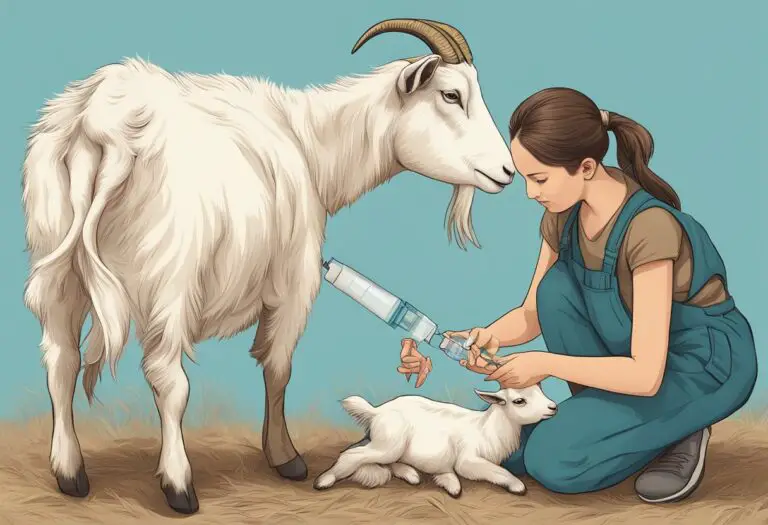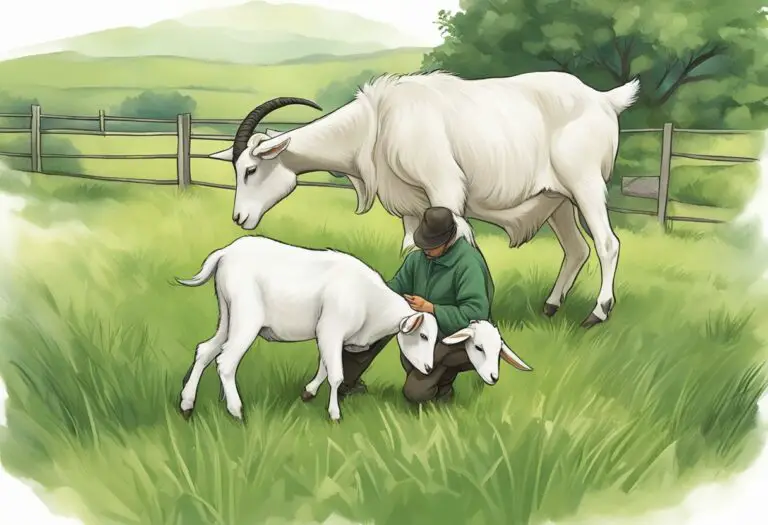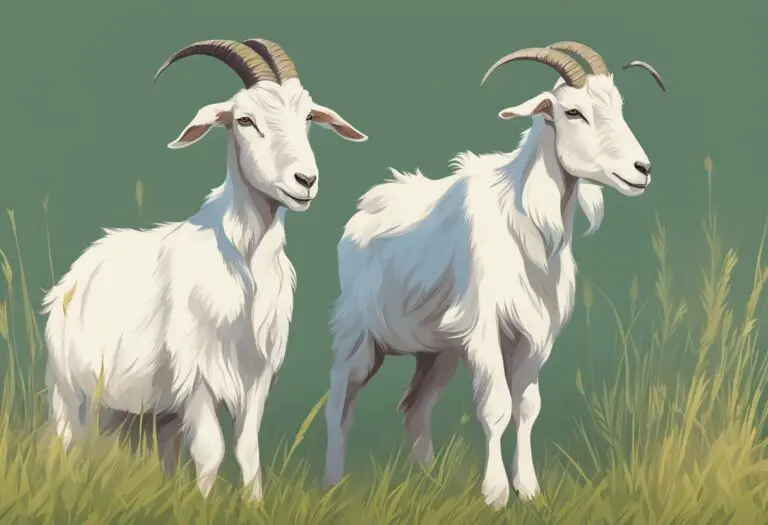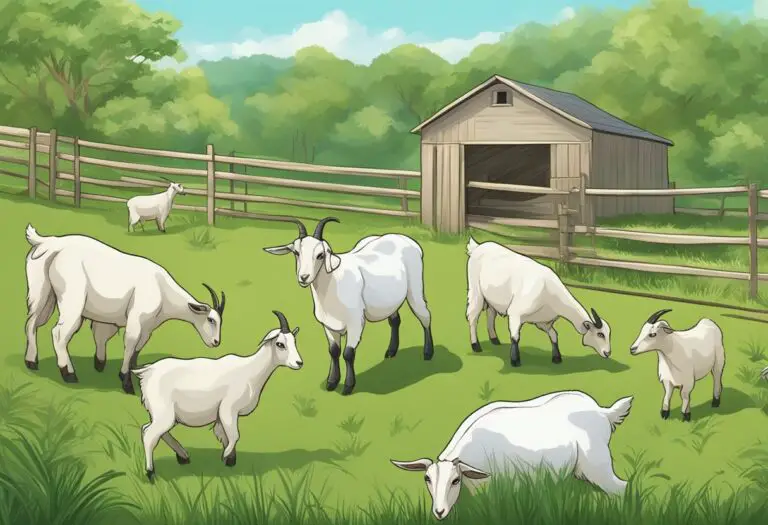How to Start Goat Breeding: A Beginner’s Guide
Goat breeding is a popular practice among farmers, homesteaders, and hobbyists alike. Raising goats can provide a source of meat, milk, and fiber, as well as companionship and entertainment. However, getting started in goat breeding can be overwhelming for those who are new to the process.
Before beginning goat breeding, it is important to consider the purpose of the breeding. Will the goats be raised for meat, milk, or fiber? Will they be used for showing or as pets? The answers to these questions will determine the breed of goat that is chosen and the breeding practices that will be used. It is also important to research the local laws and regulations regarding goat ownership and breeding in the area.
Once the purpose and breed of goat have been determined, it is important to select healthy breeding stock. This includes choosing goats that are free from genetic defects and have good conformation. It is also important to test the goats for any diseases or infections that could be passed on to their offspring. Proper nutrition, shelter, and care are also essential for successful goat breeding.
Understanding Goat Breeding

Breeding Goals
Before starting goat breeding, it is important to determine the breeding goals. Breeding goals may vary depending on the purpose of breeding. Some breeders may aim to produce goats for milk, meat, or fiber, while others may focus on breeding for show or as pets. It is important to determine the breeding goals to select the appropriate breeding program and breeding stock.
Selecting Breeds
Selecting the right breed is crucial in goat breeding. Different breeds have unique characteristics, such as milk production, meat quality, and fiber type. Breed selection should be based on the breeding goals and the environment where the goats will be raised. Some breeds may be better suited for certain climates or management systems, so it is important to consider these factors when selecting a breed.
Genetics Fundamentals
Understanding genetics is essential in goat breeding. It is important to know the basics of inheritance, such as dominant and recessive traits, to make informed breeding decisions. Breeding for desirable traits, such as high milk production or meat quality, requires knowledge of genetics and breeding strategies. Breeders should also be aware of genetic defects and how to avoid them in their breeding program.
In summary, understanding goat breeding involves determining breeding goals, selecting the appropriate breed, and having a basic understanding of genetics. By considering these factors, breeders can develop a successful breeding program and produce high-quality goats.
Setting Up Your Breeding Facility

Choosing a Location
The first step in setting up your goat breeding facility is to choose a suitable location. It is important to select a location that is easily accessible and has good drainage. The area should also be free from predators and other animals that may pose a threat to your goats. Additionally, the location should have access to clean water and be close to a veterinarian in case of emergencies.
Facility Requirements
Once you have chosen a suitable location, the next step is to ensure that your breeding facility meets all the necessary requirements. This includes having adequate fencing to keep the goats in and predators out. The fencing should be at least 4 feet high and made of sturdy materials such as wood or wire mesh.
You will also need to provide shelter for your goats. A simple shed or barn will suffice, but it should be large enough to accommodate all of your goats comfortably. The shelter should be well-ventilated and provide protection from the elements.
Equipment and Supplies
In addition to the facility requirements, you will also need to invest in some equipment and supplies. This includes feeding and watering equipment, such as troughs and buckets. You will also need to purchase bedding materials, such as straw or hay, to keep your goats comfortable.
Other supplies you may need include grooming tools, such as brushes and combs, and medical supplies, such as antibiotics and vaccines. It is important to keep your breeding facility clean and well-maintained to prevent the spread of disease.
By following these guidelines, you will be well on your way to setting up a successful goat breeding facility.
Breeding Process

Estrus Cycle
Before breeding goats, it’s important to understand their estrus cycle. Female goats, or does, go into heat every 18-21 days during breeding season, which typically runs from August to January. Signs of heat include restlessness, frequent urination, and a swollen vulva. It’s important to keep track of each doe’s cycle so you can plan for breeding accordingly.
Mating Strategies
There are a few different mating strategies you can use when breeding goats. One common method is to use a teaser buck to stimulate the does and help identify which ones are in heat. Once you’ve identified a doe in heat, you can introduce a breeding buck for mating. Another option is to use artificial insemination, which can be a good choice if you want to breed your does to a buck that’s not local or if you want to avoid the risks associated with natural breeding.
Pregnancy and Kidding
Once a doe has been bred, she’ll be pregnant for approximately 150 days. During this time, it’s important to provide her with proper nutrition and care to ensure a healthy pregnancy. About a month before the due date, you’ll want to prepare a clean, dry area for the doe to give birth. When the time comes, the doe will typically give birth to 1-3 kids. It’s important to monitor the doe and kids closely during this time to ensure everyone is healthy and thriving.
Breeding goats can be a rewarding and profitable endeavor, but it’s important to approach it with knowledge and care. By understanding the estrus cycle, choosing the right mating strategies, and providing proper care during pregnancy and kidding, you can set yourself up for success in goat breeding.
Health Management

Nutrition for Breeding Goats
Good nutrition is essential for the health and productivity of breeding goats. Breeding does should be fed a balanced diet that meets their nutritional needs for energy, protein, minerals, and vitamins. It is important to provide fresh, clean drinking water at all times.
During pregnancy, does require additional nutrients to support the growth and development of their fetuses. Feeding a high-quality diet that is rich in protein, vitamins, and minerals is essential during this time. After kidding, does require a diet that is high in energy to support milk production.
Disease Prevention
Preventing disease is an important aspect of goat health management. Breeding goats should be vaccinated against common diseases, such as tetanus, rabies, and clostridial diseases. It is important to work with a veterinarian to develop a vaccination schedule that is appropriate for your herd.
In addition to vaccination, it is important to practice good biosecurity measures to prevent the introduction and spread of disease. This includes quarantining new animals before introducing them to the herd, maintaining a clean and dry living environment, and practicing good hygiene when handling animals.
Routine Health Checks
Regular health checks are important for detecting and treating health problems early. Breeding goats should be checked regularly for signs of illness, such as diarrhea, coughing, or lameness. It is important to monitor body condition and weight to ensure that goats are maintaining a healthy weight.
In addition to physical health checks, breeding goats should have their hooves trimmed regularly to prevent foot problems. They should also be dewormed regularly to prevent internal parasites.
By following good health management practices, breeding goats can lead healthy, productive lives. Regular monitoring and preventative measures can help to prevent illness and ensure the long-term success of your breeding program.
Business Aspects

Market Research
Before starting a goat breeding business, it is essential to conduct thorough market research. This research will help in identifying the demand for goat products in the local market and understanding the competition. It is important to gather information on the types of goats that are in demand, their breeding requirements, and the prices they fetch in the market. By conducting market research, one can gain valuable insights into the target audience and tailor their breeding program accordingly.
Financial Planning
Starting a goat breeding business requires a significant investment in terms of capital, time, and effort. It is important to develop a comprehensive financial plan that includes the costs of purchasing goats, building infrastructure, and hiring staff. This plan should also include projections for revenue and profits based on market research. It is important to have a contingency plan in case of unforeseen circumstances that may impact the business’s financial stability.
Marketing and Sales
Marketing and sales are critical components of any successful goat breeding business. It is important to develop a strong brand identity and marketing strategy that resonates with the target audience. This could include creating a website, social media presence, and advertising in local publications. Developing relationships with local retailers and restaurants can also help in increasing sales. It is important to have a clear understanding of the target audience and their preferences to tailor marketing and sales efforts accordingly.
In conclusion, starting a goat breeding business requires careful consideration and planning. By conducting thorough market research, developing a comprehensive financial plan, and implementing effective marketing and sales strategies, one can increase the chances of success in this industry.
Legal Considerations

Regulations and Compliance
Before starting a goat breeding business, it is important to understand the regulations and compliance requirements in your area. This includes zoning laws, animal welfare regulations, and any permits or licenses required to operate a breeding facility.
Zoning laws vary by location and may dictate where a breeding facility can be located, as well as the number of goats that can be kept on the property. It is important to check with your local zoning board to ensure that your breeding facility is in compliance with all zoning regulations.
Animal welfare regulations also vary by location and may include requirements for housing, feeding, and medical care for goats. Breeding facilities must comply with these regulations to ensure the health and well-being of their animals.
In addition to zoning and animal welfare regulations, breeding facilities may also require permits or licenses to operate. These licenses may be issued by the state or local government and may require inspections and compliance with additional regulations.
Breeding Licenses
Breeding licenses may be required in some areas to operate a goat breeding facility. These licenses may require applicants to meet certain qualifications, such as completing a training program or demonstrating knowledge of goat breeding practices.
It is important to research the specific licensing requirements in your area and ensure that you are in compliance before starting a breeding business. Failure to obtain the necessary licenses or permits can result in fines or legal action, and can also harm the reputation of your business.
Record Keeping and Data Management

Keeping accurate records is crucial for successful goat breeding. It allows breeders to track the progress of their goats and make informed decisions about breeding and herd management. Here are a few tips on record keeping and data management for goat breeding:
- Record all breeding activities: Keep track of the breeding dates, the buck used, and the doe’s identification numbers. This information will help breeders predict due dates and monitor the success of breeding programs.
- Monitor health and medical treatments: Keep detailed records of any medical treatments given to the goats, including vaccinations, deworming, and any medications. This will help breeders identify any recurring health issues and ensure that all goats receive the proper care.
- Track milk production: If the breeder is breeding dairy goats, it is essential to keep track of milk production. Record the amount of milk produced by each doe, the date of milking, and any changes in milk production. This information will help breeders identify high-performing goats and make informed breeding decisions.
- Use a spreadsheet or software: Breeders can use a spreadsheet or software to keep track of their goat records. This will allow them to easily sort and analyze data, identify trends, and make informed decisions about breeding and herd management.
- Regularly review and update records: Breeders should review and update their goat records regularly to ensure that they are accurate and up-to-date. This will help them make informed decisions about their breeding programs and ensure the health and well-being of their goats.
In summary, record keeping and data management are essential for successful goat breeding. By keeping accurate records of breeding activities, health and medical treatments, milk production, and using a spreadsheet or software, breeders can make informed decisions about breeding and herd management. Regularly reviewing and updating records will ensure that the information is accurate and up-to-date.







